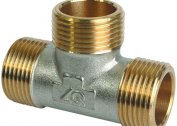When buying a plot with a private house outside the city, you should take care of the source of water supply. If the centralized communication networks are far, it is necessary to equip the well. One option is drilling a limestone well.
Artesian well device
 The central element of the source is casing pipes, which do not allow the walls of the hole to deform, collapse and crumble from the surface to the bottom. Directly in the aquifer is a mechanism for filtering and receiving water, consisting of several parts:
The central element of the source is casing pipes, which do not allow the walls of the hole to deform, collapse and crumble from the surface to the bottom. Directly in the aquifer is a mechanism for filtering and receiving water, consisting of several parts:
- Casing with perforation. It acts as a filter for the water entering the choke, preventing groundwater and sand from entering.
- A level above is a shutoff pipe. Protects the water supply system from floaters that can enter it from the upper aquifers.
- Even higher is the static level, which is located in the sandy aquifer.
The water well has a different diameter along its entire length. At the base, the greatest width, deepening, the pipes narrow and reach a minimum cross section in the layers of limestone.
Drilling technology
 The purpose of drilling the source is to achieve an aquifer beneath the sand. The depth of the well on the limestone ranges from 70 to 300 m. To find out where the nearest underground aquifer is, contact surveyors for a detailed map of the soil in the area.
The purpose of drilling the source is to achieve an aquifer beneath the sand. The depth of the well on the limestone ranges from 70 to 300 m. To find out where the nearest underground aquifer is, contact surveyors for a detailed map of the soil in the area.
You can drill an artesian well into limestone in several ways, each of which has features:
- Shock-rope. Based on the use of the Earth's gravity. Drilling is carried out using a heavy impact mechanism, which is raised to a height using cables pulled through the blocks to facilitate operation. With each new hit on the surface, the driven glass goes deeper, bringing the rock to the surface.
- Screw (screw). The hole in the rock is made using a drill with a special tip and spiral edges. During rotation, they raise the soil up and deepen. The method is good in that it is not limited by the depth of drilling, if you use an electric drive to rotate the mechanism.
The hydrodynamic method, in which the rock is washed to the surface under the influence of a strong pressure of the water supplied manually into the choke, is not suitable for an artesian well, since it reaches the limit after 15 - 20 m.
The benefits of an artesian source
 The method of drilling wells for limestone is widely available. If desired, you can make a bellow with a depth of up to 300 m anywhere, since the underground rocks are rich in lime.
The method of drilling wells for limestone is widely available. If desired, you can make a bellow with a depth of up to 300 m anywhere, since the underground rocks are rich in lime.
Layers of limestone are isolated from groundwater, which will prevent sediments like sand from entering the water intake. The artesian well is durable - it will last more than 20 years.
Given the high concentration of liquid in the limestone layers, at least 4-5 cubic meters can be pumped out of the source in an hour. m of water.
Water quality is high - there is no need to mount a special filter in the water horizon itself. It is enough to apply a perforated casing, which you can do yourself.
Cons of limestone drilling
The limestone well has its drawbacks:
- Since the depth of the flap is large, you will need to equip it with casing pipes. Moreover, the footage is proportional to the depth, which entails additional expenses.
- To drill an artesian well to a depth of more than a hundred meters, you need to use special equipment, including roller cone bits.
- The cost of the work will not please the owner of the site. Drilling at 250 m is expensive.In addition, a source license is required, the cost of which starts from 500 thousand rubles.
It should also be borne in mind that there may be a need for unexpected maintenance of the bailer. If a casing rupture or other malfunction occurs at a depth of several hundred meters, it will be very difficult to solve the problem due to inaccessibility.
The main criterion for choosing between a sand and artesian well is the amount of water that is planned to be obtained from the depths. If you need a large flow rate of liquid, comprising 4 - 5 cubic meters. m per hour, definitely the choice must be stopped on the limestone layer. This is more characteristic of enterprises and production. For a small plot for one family, it’s enough to dig a billet to the sand layer, which brings less volume, but is more economical in organization.


